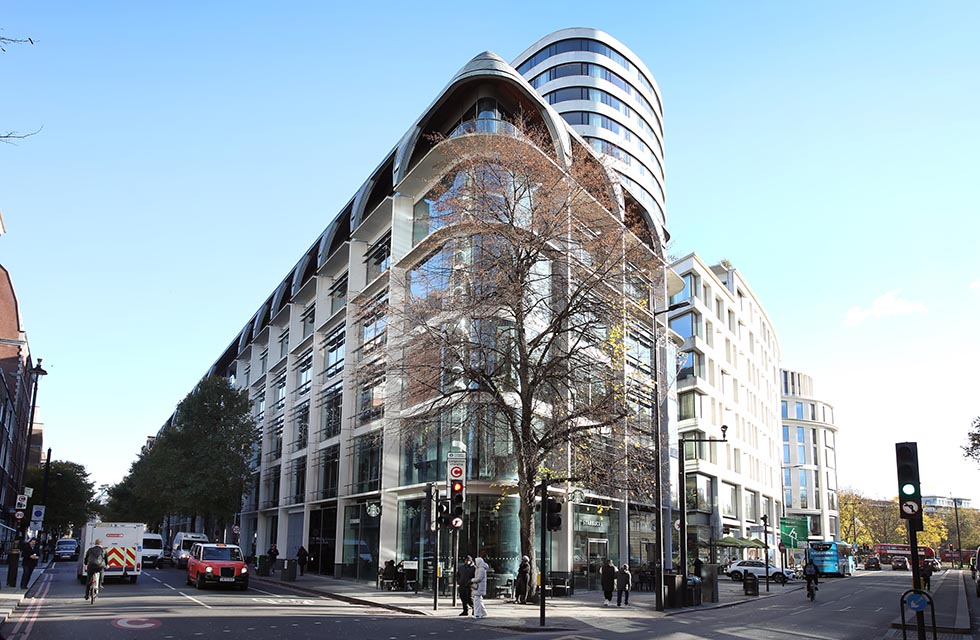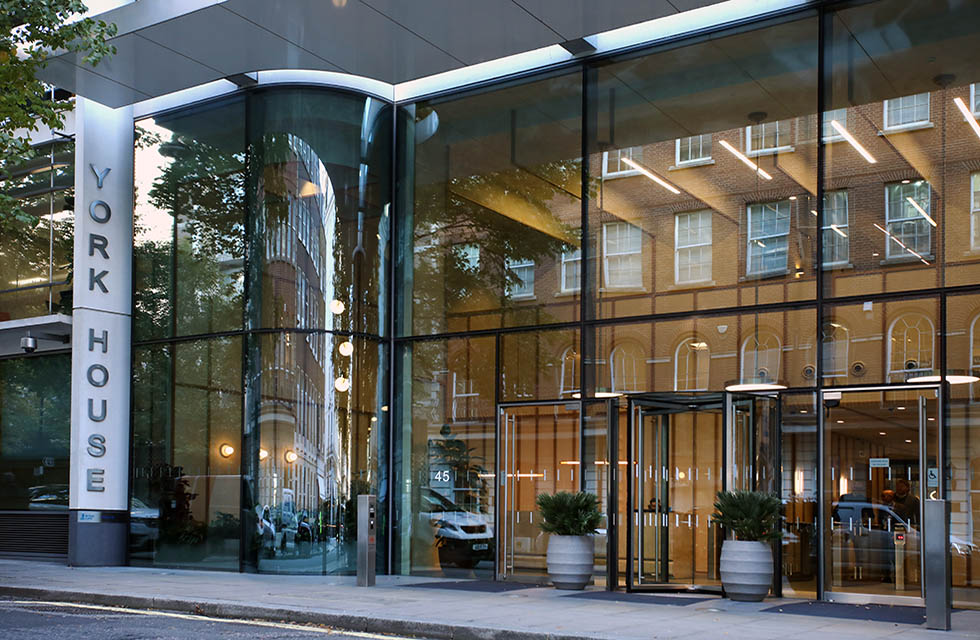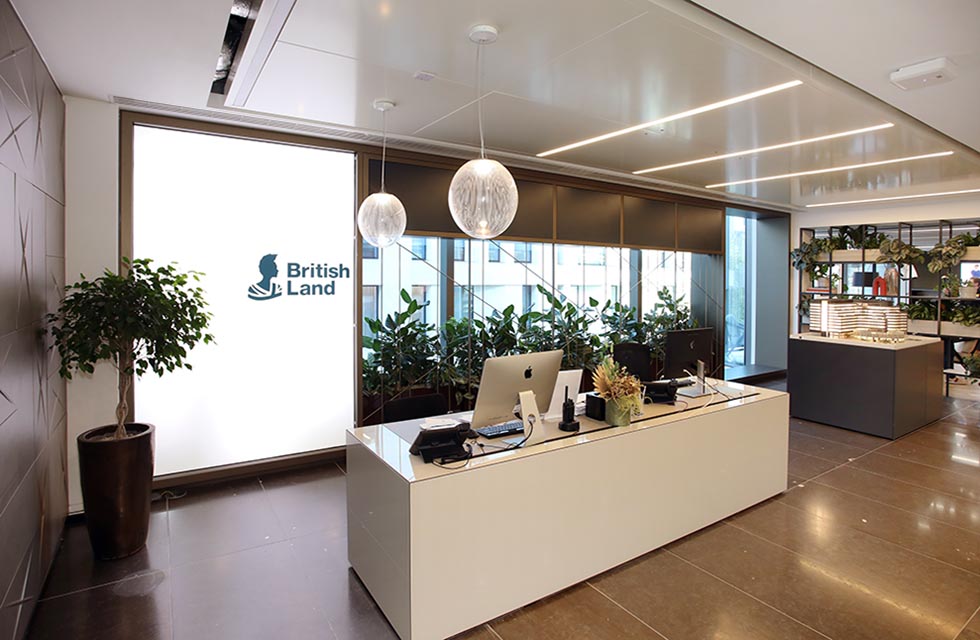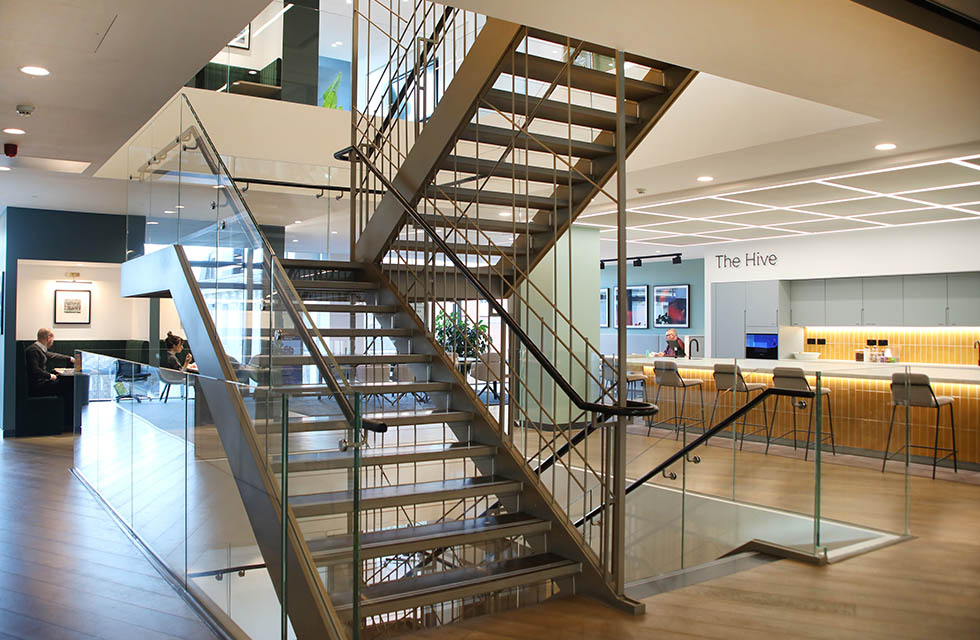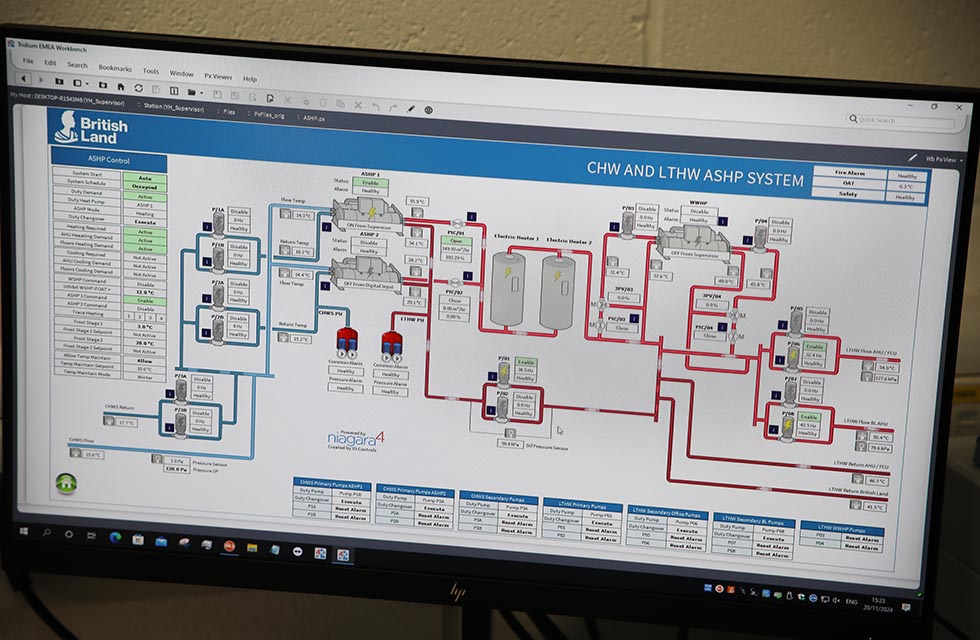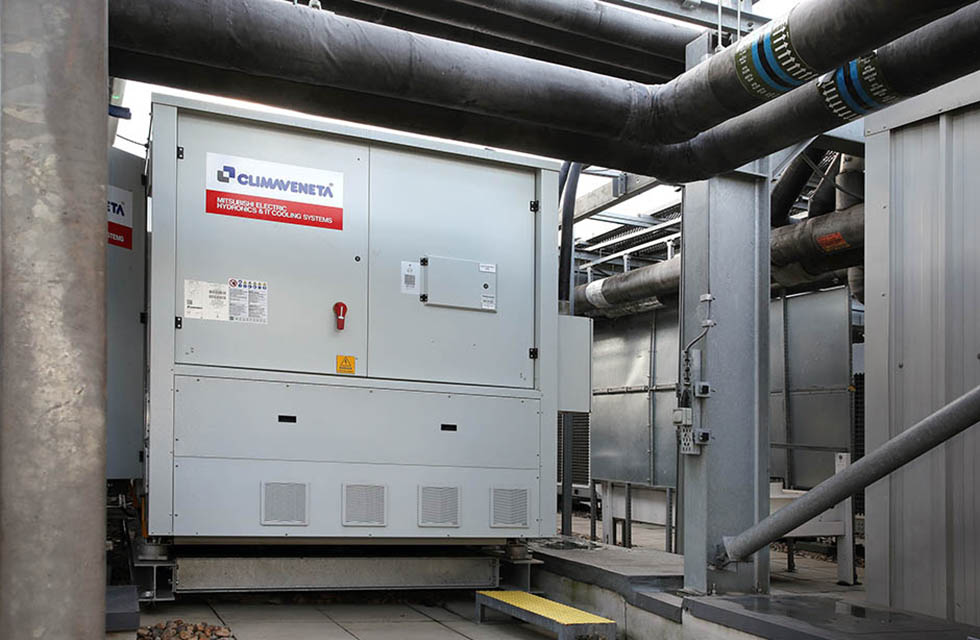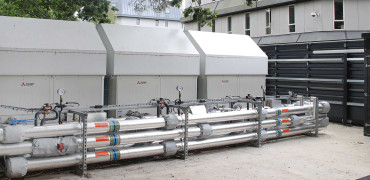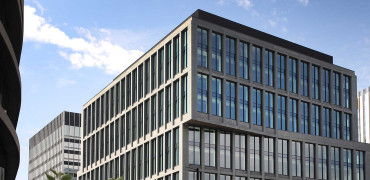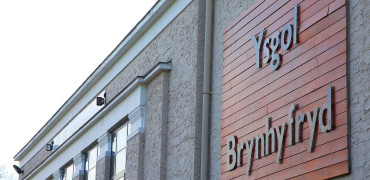Refurb Projects, Carole Titmuss looks at a major retrofit project that completely removes gas heating in favour of renewable heat pumps.
When leading UK property development and investment company, British Land wanted to decarbonise its flagship headquarters in London’s Marylebone, the company took the opportunity to showcase how low carbon heating could be achieved, without needing gas as backup.
York House is a five floor, multi tenanted office space which previously generated heat with natural gas. The building also has a 24-hour cooling demand and extended fresh air requirements. The project to remove the carbon-intensive heating involved installing two air source heat pumps and a water-to-water heat pump to replace four gas boilers.
The result is a 5-storey office building where gas has been completely removed to deliver more than 400,000 kilowatt hour reduction year on year in energy – all achieved in a central London retrofit project, where roof space for plant was at a premium.
The benefits were higher operational efficiencies, lower initial capital costs and a simpler installation
A first for British Land
“The project at York House is quite unique because it was our first building where we achieved a full gas removal by using heat pump technology,” commented Matt Beales, Head of Technical Project Delivery for British Land. “Our previous projects have been hybrid with gas being retained, but with this one we really wanted to lead by example as it’s our head office.”
The design of the solution was provided by the engineering design consultancy, 21 Engineering and the starting point was an advanced building model in line with the NABARS standard to identify what the actual peak load would be.
“We came up with the principle that we could actually utilise a 95% peak load to minimise the equipment size and optimise the project costs as well,” explained Phil Draper, managing director of 21 Engineering.
“We looked at controlling the building on what’s called a demand driven strategy, which means that the building isn’t allowed to get cold and that reduces the time needed to heat it up and maximises the efficiency of the heat pump technology.”
Two major challenges
Once the system had been designed, there remained two major challenges with the project – the limited space for plant on the rooftop and installing the new heating system in a fully operational building.
“We decided to complete the works within normal office hours, so nearby apartments weren’t disturbed and that meant the office building was fully occupied,” explained Geoff Broughey, Senior Technical Services Manager for British Land and York House. “The majority of the work took place on the roof, so the building occupants weren’t aware.”
A structural survey of the rooftop was carried out because the footprint of the new equipment was slightly larger, and the weight was also higher. The roof space is very limited, so careful planning was needed with the installer, Nationwide Air Conditioning 3-D modelling the pipework and surrounding areas to make sure there were no surprises.
High flow temperatures
The offices were previously heated by four gas boilers equating to over a megawatt of heating capacity. The new equipment is two Climaveneta i-FX-Q-GO5 air source heat pump chillers with a combined heating capacity of 1,113 kilowatts and a combined cooling capacity of 1,250 kilowatts.
Working with the heat pump chillers is an EW-HT/0612 water to water heat pump which raises the flow temperature from 50°C to 65°C, this means that the existing heat emitters could be left in place and utilised, saving both time and costs.
“A major challenge around the project was ensuring we could maintain a flow temperature hot enough to heat the building at all times and this is why we installed the EW-HT water-to-water heat pump,” commented Daniel Valente, Head of Projects for Nationwide Air Conditioning.
“The unique aspect of this project was that there is no hydronic separation and a much lower capacity on the water-to-water so that we only inject the amount of heat needed to give the building the load it needs during the winter months.”
York House has a year-long cooling load and the Mitsubishi Electric four-pipe heat pump chillers mean that British Land can use some of the waste heat from that process to heat the building and help minimise energy consumption.
The benefits to this for British Land were higher operational efficiencies, lower initial capital costs and a simpler installation.
Lower GWP refrigerant
The four-pipe heat pumps use R513A which is a refrigerant with a lower global warming potential (GWP) and this has also been a big plus for British Land particularly when it comes to trying to get the Energy Performance Certificate (EPC) rating for the building as high as possible.
“We used a CIBSE TM65 framework to calculate the amount of embodied carbon from the project” added Matt Beales from British Land. “Our sustainability targets are for a 75% reduction in carbon, operational carbon, and a 25% reduction in operational energy and these targets are set to be achieved by 2030.”
At the start of the project, embodied carbon assessments were still a fairly new concept, so obtaining and sharing information to produce the report called for close collaboration between British Land, 21 Engineering, Nationwide Air Conditioning and heat pump manufacturer Mitsubishi Electric.
“We’re a preferred manufacturer for British Land across their whole estate and we are also the first heat pump manufacturer to included embodied carbon for our products,” explained Mike Egan, Corporate Business Development Manager for the company. “We worked closely with everyone involved to ensure we could help British land achieve the solution that would work for the building.”
Based on the success of what has been achieved at York House, it now serves as the benchmark for future projects so, where British Land is looking to retrofit existing assets, they are looking to fully remove gas so York House has become the model to follow.
“What we’ve managed to prove here is that in a building like this we can achieve a significant reduction year on year in energy and that’s no small feat in a retrofit project,” commented Phil Draper from 21 Engineering.
“One of the key successes we’ve been able to do here is to prove that not only have we reduced carbon, and energy consumption, we’ve also increased comfort for the building’s occupants, and control and reporting for British Land.”
Carole Titmuss is Editor of Refurb Projects


